We are in the latest stage of revolution called Information Revolution. The software projects have fast-moving, complex and frequently changing environment. This has led to the call for an agile approach. There are more than ten agile methodologies. The common agile methodologies are Scrum, Extreme programming(XP), Kanban, lean product development, feature-driven development and so on. Among these, Scrum and XP are prominently used.
Agile Methodologies: Scrum:
Scrum is easy and popular agile among agile methodologies. In the agile scrum, software is developed in the several incremental releases called as a sprint. In every sprint, few requirements are considered for implementation of the potentially shippable product. The duration of each sprint can be two to four weeks. The product backlog and sprint backlog documents are used for tracking. The key roles in agile scrum are the product owner, the scrum master and the team.
Agile Methodologies: Extreme programming(XP):
Extreme programming is another widely used Agile methodology. It is often known as XP. Extreme programming focuses on best practices of software development. The software is developed using an iterative approach. Each iteration can be of two weeks duration. The user stories are used to plan the iterations. User stories are two line description of the features. The extreme programming is characterized by test-driven development, pair programming, and simple design. Each software release is followed by approval from the client. ‘Spikes’ are work periods for reducing risks. The key roles are the coach, customer, programmers, and testers.
Agile Methodologies: Kanban:
The Kanban agile methodology is developed at Toyota. The term ‘Kanban’ is a Japanese word meaning ‘signboard’. The signboard or Kanban shows the work items under each stage of production. The Kanban agile method is a task-based approach. Each item is pulled to the next stage of progress when there is a free slot in the Kanban (a signboard). The importance is given to limiting WIP(work in progress). It is important to limit WIP because it increases the productivity and work is done faster.
Agile Methodologies: Lean Product Development:
The lean agile method was developed in Toyota. It was developed for product based industry and later applied to software projects. According to PMI, lean agile method focuses on core concepts like eliminating waste, empowering the team, fast delivery, optimizing the whole, build quality, defer decisions and amplify learning.
Agile Methodologies: Feature Driven Development:
In Feature Driven Agile Development method, the software is developed based on a list of features. The further activities of the software development are based on the list of features. The small and dynamic teams consider a feature at a time for the software development. The cumulative flow diagrams and parking lot diagrams are commonly used tracking and diagnostic tools.
All the Agile methodologies have the same basic concept of situation based approach. They are suitable for projects of a new type and new technology for quick releases.
Check your understanding:
1. Name and explain(in at least 5 sentences) the Agile methodologies NOT listed in the article.





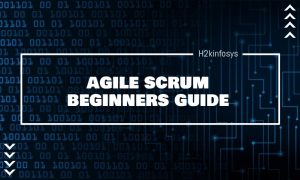


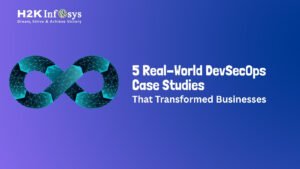




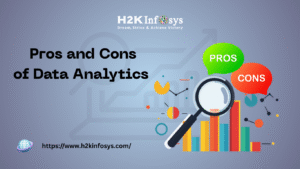
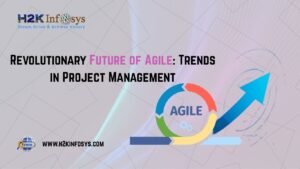



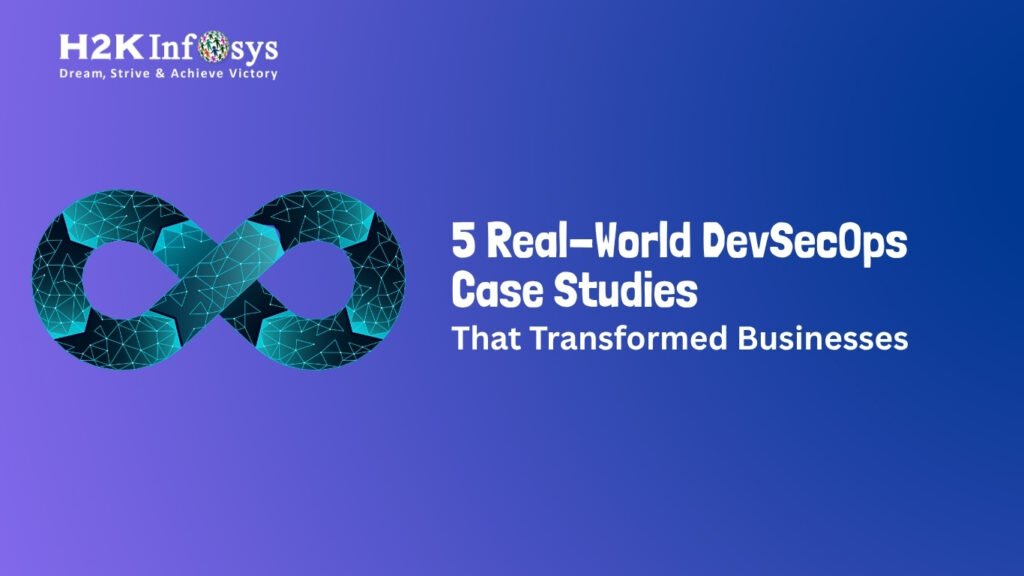

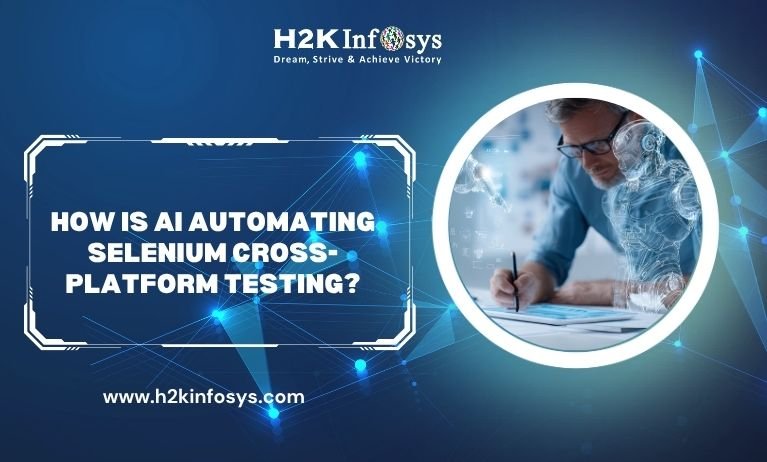


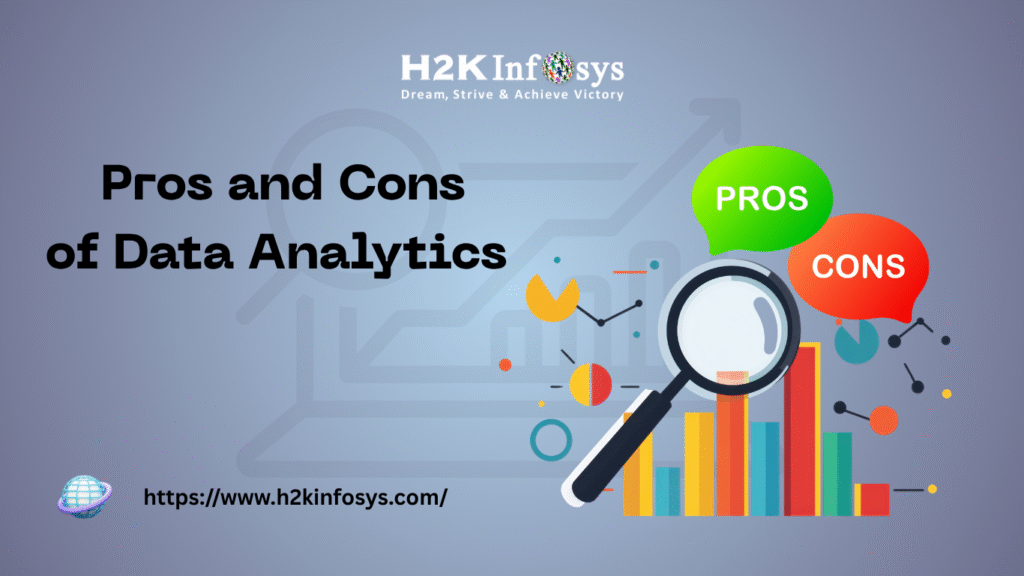
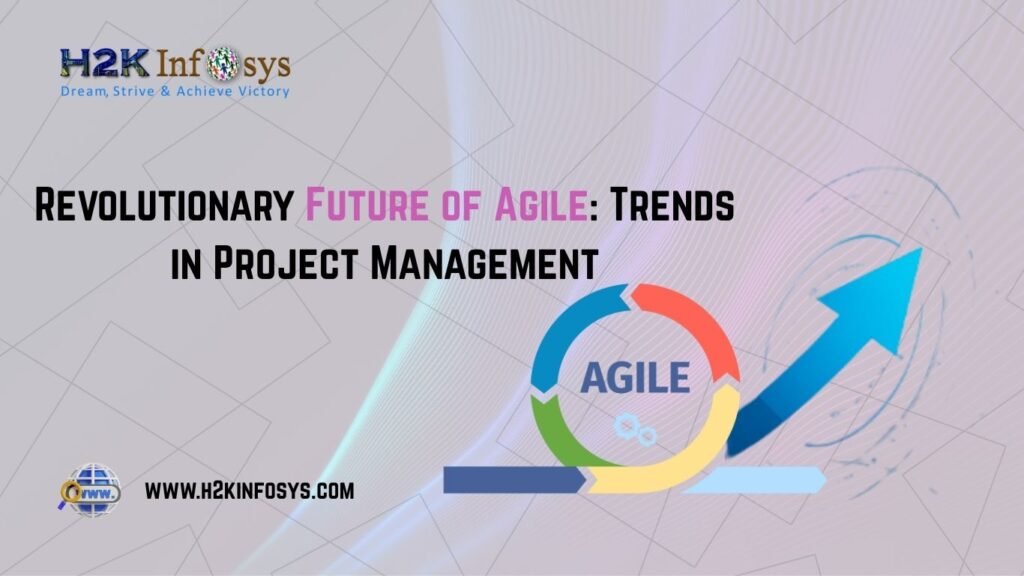

88 Responses
Adaptive Software Development:
Adaptive software development is a management to control software project for changeable requirement and short period project.
Dynamic Systems Development Method (DSDM):
DSDM is an example of an iterative (Agile) development model. DSDM approaches every step in the process to be completed only enough to be able to move to the next step.
Crystal Methodology:Crystal method is that the teams involved in developing software would typically have varied skill and talent sets, driven by several factors such as team size, system criticality, and project priorities. This approach realizes that each project can have a slightly different set of policies, procedures or processes in order to meet the project ‘s unique characteristics.
Scrum agile methodologies. In the agile scrum, software is developed in the several incremental releases called as a sprint.
The Kanban agile method is a task-based approach when a slot opens after a task is completed the next one is started.
Driven Agile Development method, the software is developed based on a list of features. Kind of like the idea brick by brick the project is completed feature by feature.
1.Adaptive software development (ASD) is a software development process that grew out of the work by Jim Highsmith and Sam Bayer on rapid application development (RAD). It embodies the principle that continuous adaptation of the process to the work at hand is the normal state of affairs.
2.Agile Unified Process (AUP) is a simplified version of the Rational Unified Process (RUP) developed by Scott Ambler. It describes a simple, easy to understand approach to developing business application software using agile techniques and concepts yet still remaining true to the RUP. The AUP applies agile techniques including test-driven development (TDD), agile modeling (AM), agile change management, and database refactoring to improve productivity.
3.Disciplined agile delivery (DAD) is a process decision framework that enables simplified process decisions around incremental and iterative solution delivery. DAD builds on the many practices espoused by advocates of agile software development, including Scrum, agile modeling, lean software development, and others.
4.Rapid-application development (RAD) is both a general term, used to refer to adaptive software development approaches, as well as the name for James Martin’s approach to rapid development. In general, RAD approaches to software development put less emphasis on planning and more emphasis on an adaptive process. Prototypes are often used in addition to or sometimes even in place of design specifications.
5.Scrumban is an Agile management methodology describing hybrids of Scrum and Kanban and was originally designed as a way to transition from Scrum to Kanban. Today, Scrumban is a management framework that emerges when teams employ Scrum as their chosen way of working and use the Kanban Method as a lens through which to view, understand and continuously improve how they work
1. Adaptive Software Development: is a management to control software project for changeable requirement and short period project.
Dynamic Systems Development Method :
DSDM is an example of an iterative (Agile) development model. DSDM approaches every step in the process to be completed only enough to be able to move to the next step.
2. Crystal Methodology:Crystal method is that the teams involved in developing software would typically have varied skill and talent sets, driven by several factors such as team size, system criticality, and project priorities. This approach realizes that each project can have a slightly different set of policies, procedures or processes in order to meet the project ‘s unique characteristics .
3. Agile Unified Process (AUP) is a simplified version of the Rational Unified Process (RUP) developed by Scott Ambler. It describes a simple, easy to understand approach to developing business application software using agile techniques and concepts yet still remaining true to the RUP. The AUP applies agile techniques including test-driven development (TDD), agile modeling (AM), agile change management, and database refactoring to improve productivity.
4. Disciplined agile delivery (DAD) is a process decision framework that enables simplified process decisions around incremental and iterative solution delivery. DAD builds on the many practices espoused by advocates of agile software development, including Scrum, agile modeling, lean software development, and others.
5. Rapid-application development (RAD) is both a general term, used to refer to adaptive software development approaches, as well as the name for James Martin’s approach to rapid development. In general, RAD approaches to software development put less emphasis on planning and more emphasis on an adaptive process. Prototypes are often used in addition to or sometimes even in place of design specifications.
6. Scrumban is an Agile management methodology describing hybrids of Scrum and Kanban and was originally designed as a way to transition from Scrum to Kanban. Today, Scrumban is a management framework that emerges when teams employ Scrum as their chosen way of working and use the Kanban Method as a lens through which to view, understand and continuously improve how they work
A linear process, Waterfall methodology is another example of Agile methodology that uses a sequential process. It is one of the popular models given its simplicity to use and manage. It uses Gantt chart, bar chart and shows start and end dates of project. It starts from early stage and moves down to the next phase and hence also called as top-down method.
Scrumban is the hybrid of Scrum and Kanban. As Scrum is the best for the products and development projects and Kanban is best for production support, when combined it gives the best features for projects.
. Name and explain(in at least 5 sentences) the Agile methodologies NOT listed in the article.
-Agile methodologies not listed in the article are
Adaptive software development is a management to control software project for changeable requirement.
Key point of adaptive software development are
•Speculation
•Collabaration
• Learning
Lean Development
* One of the key ideas in Lean Production-eliminate waste is drawn from TPS( Toyota Production system).Lean Development allows companies to manage their risk and turn that risk into an opportunity.
DSDM:DSDM is an example of an iterative (Agile)
Development model.The goal if DSDM is to target a demand for organization to deliver working systems in short time.
Crystal Methods:Crystal methods are considered and described as “light weight methodologies”
Crystal methods are focused on:
•People
•Interaction
•Community
•Skills
•Talents
•Communications
Feauture Driven Development (FDD)
FDD model is a driven process of short iterations
Since 1994, the DSDM methodology has evolved and matured to provide a comprehensive foundation for planning, managing, executing, and scaling agile process and iterative software development projects.
DSDM is based on nine key principles that primarily revolve around business needs/value, active user involvement, empowered teams, frequent delivery, integrated testing, and stakeholder collaboration. DSDM specifically calls out “fitness for business purpose” as the primary criteria for delivery and acceptance of a system, focusing on the useful 80% of the system that can be deployed in 20% of the time.
Requirements are baselined at a high level early in the project. Rework is built into the process, and all development changes must be reversible. Requirements are planned and delivered in short, fixed-length time-boxes, also referred to as iterations, and requirements for DSDM projects are prioritized using MoSCoW Rules:
M – Must have requirements
S – Should have if at all possible
C – Could have but not critical
W – Won ‘t have this time, but potentially later
All critical work must be completed in a DSDM project. It is also important that not every requirement in a project or time-box is considered critical. Within each time-box, less critical items are included so that if necessary, they can be removed to keep from impacting higher priority requirements on the schedule.
The DSDM project framework is independent of, and can be implemented in conjunction with, other iterative methodologies such as Extreme Programming and the Rational Unified Process.
Q= Name and explain(in at least 5 sentences) the Agile methodologies NOT listed in the article.
A= * Crystal methodology
This methodology is most lightweight, adaptable approach to software development.It includes teamwork,communication
and simplicity to improve the process.
* Dynamic systems development method (DSDM )
DSDM approach to provide a comprehensive foundation of planning,managing,executing agile process.High level of
requirement are gathered in early level of project.This method is independent and can be implemented with other
methodologies.i.e Extreme programming and Rational unified process.
Adaptive software development- its a mission focused,feature base,time box,risk driven and change tolerance process
Crystal-it promote early,frequent delivery of software,higher user involvement,adaptabillity and removal of distractions
Dynamic system development method-it is an interactive and incremental approach
Agile modeling-this is suppliment to other agile development methodology such as scrumXP
Scrumban- it is hybrid of scrum and Kanban.
DSDM (Dynamic Systems Development Method)
DSDM methodology has evolved to provide a framework for RAD. It provides foundation for planning, managing, executing, and scaling agile process and iterative software development projects. DSDM is based on nine key principles that primarily revolve around business needs/value, active user involvement, empowered teams, frequent delivery, integrated testing, and stakeholder collaboration. Requirements are planned and delivered in short, fixed-length time-boxes, also referred to as iterations, and requirements for DSDM projects are prioritized using MoSCoW Rules:
M – Must have requirements
S – Should have if at all possible
C – Could have but not critical
W – Won ‘t have this time, but potentially later
All critical work must be completed in a DSDM project.
Agile methodologies
These methodologies are rooted in adaptive planning, early delivery and continuous improvement, all with an eye toward being able to respond to change quickly and easily
The four methodologies briefly explained:
Prioritizing requirements based on risk since it’s not possible to test everything
Automating tests to increase efficiency
Increasing the use of exploratory testing to accelerate the time from code delivery to test completion and to emphasize the need to create code that works
Adapting to changes from sprint to sprint
Name and explain(in at least 5 sentences) the Agile methodologies NOT listed in the article
1. story backing tools
2. sprints
3.scrum
4.spring planning
5.scrum management
One of the Agile methodology is DSDM( Dynamic System Development Method) focuses on the full project lifecycle and strategic goals of an early delivery of real benefits to the client requirement. The principle of DSDM
– It fugues on the business need
– Quality is the main focus
– Communication among IT team member and customer is vital
– Change is requirement is quickly implemented and there is much control on pace
– It is deliverable on time
-continuous collaboration
-Clear understanding of what client needs with good foundation of team work
Agile software development refers to a group of software development methodologies based on iterative development, In this methodology, requirements and solutions evolve through collaboration between self-organizing cross-functional teams. Agile methods or Agile processes generally promote a disciplined project management process that encourages frequent inspection and adaptation, a leadership philosophy that encourages teamwork, self-organization and accountability, a set of engineering best practices intended to allow for rapid delivery of high-quality software, and a business approach that aligns development with customer needs and company goals.
Agile Methodologies: Agile methods grew out of experience with real life projects of leading software professionals from the past.
Agile methods generally promote a disciplined project management process that encourages frequent inspection and adaptation, a leadership philosophy that encourages team work, self organization and accountability.
1.DSDM.: Dynamic systems development method (DSDM) is an agile project delivery framework, initially used as a software development method.
2.Adaptive Software Develop: is a software development process that grew out of the work by Jim Highsmith and Sam Bayer on rapid application development (RAD). It embodies the principle that continuous adaptation of the process to the work at hand is the normal state of affairs.
3. Crystal Methodology:Crystal method is that the teams involved in developing software would typically have varied skill and talent sets, driven by several factors such as team size, system criticality, and project priorities. This approach realizes that each project can have a slightly different set of policies, procedures or processes in order to meet the project ‘s unique characteristics.
4. Scrumban is an Agile management methodology describing hybrids of Scrum and Kanban and was originally designed as a way to transition from Scrum to Kanban. Today, Scrumban is a management framework that emerges when teams employ Scrum as their chosen way of working and use the Kanban Method as a lens through which to view, understand and continuously improve how they work
5..Rapid-application development (RAD) is both a general term, used to refer to adaptive software development approaches, as well as the name for James Martin’s approach to rapid development. In general, RAD approaches to software development put less emphasis on planning and more emphasis on an adaptive process. Prototypes are often used in addition to or sometimes even in place of design specifications.
Agile methodologies
In this fast moving, complex and frequently changing environment of information revolution, the software development model with these features was introduced in February 2001 by Agile Alliance group. Compared to traditional software development, agile software development mainly targets complex systems and product development with dynamic, iterative and incremental approach.
Following are some agile methodologies, in addition to the commonly used methodologies like: Scrum, Extreme Programming, Lean Product development, Kanban and Feature driven development:
1. Agile Software development (ASD)
2. Rapid Application Development (RAD)
3. Agile Unified Process (AUP)
4. Dynamic Systems development methodology (DSDM)
5. Disciplined agile delivery (DAD)
1. Agile Software development (ASD) approach is based on observation process method. This means, both the design of the solution and the the process to create the solution are continuously adjusted based on observations throughout the project. It replaces the traditional waterfall cycle and is made up of 3 steps: Speculate (initiation and planning), Collaborate (concurrent feature development) and Learn (Quality review)
2. Rapid Application Development (RAD) model is a software development methodology that uses minimal planning in favor of rapid prototype. RAD utilizes existing codes, repurposed templates and proven process to build new software prototypes. This makes the process versatile, adaptive and time friendly, allowing the developers to break down the design process into multiple and iterative development cycles. It is later combined to complete the design process. It is divided into 5 stages: a) Business modeling (inputs from business), b) data modeling (collecting data into central database), c) process modeling (data released), d) application generation (application development) and e) testing & turnover (tested)
3. Agile Unified Process (AUF) is a simplified version of Rational unified Process – RUP). It describes a simple and easy to understand approach in developing business application software. It uses agile techniques and concepts yet still remains true to RUP. Though RUP is an iterative and incremental software development method, it still miss some aspects of agile development such as : frequent customer interaction and increase collaboration.
4. Dynamic System Development Method (DSDM) is based on RAD model and encourages involvements by the user. This methodology of software development is part of agile development method where each individual method has its own principles and unique approach. Its goal is to develop and to provide software models within specified budget and deadlines.
5. Disciplined Agile Delivery (DAD) is a people first, learning-oriented hybrid agile approach to IT solution delivery. In other words, it is a process decision framework that enables simplified process decisions around incremental and iterative solutions delivery. It was developed to provide a more cohesive approach to fill in gaps experienced in existing agile software methods such as Scrum. It recognizes the importance of cross functional teams and offers support for scaling key practices.
Each methodology has its own values, advantages and disadvantages.
Adaptive software development- its a mission focused,feature base,time box,risk driven and change tolerance process.
Crystal-it promote early, frequent delivery of software, higher user involvement.
DSDM – Dynamic systems development method (DSDM) is an agile project delivery framework, initially used as a software development method.
Rapid-application development (RAD) is both a general term, used to refer to adaptive software development approaches, as well as the name for James Martin’s approach to rapid development. In general, RAD approaches to software development put less emphasis on planning and more emphasis on an adaptive process. Prototypes are often used in addition to or sometimes even in place of design specifications.
Agile Unified Process (AUP) is a simplified version of the Rational Unified Process (RUP) developed by Scott Ambler. It describes a simple, easy to understand approach to developing business application software using agile techniques and concepts yet still remaining true to the RUP. The AUP applies agile techniques including test-driven development (TDD), agile modeling (AM), agile change management, and database refactoring to improve productivity.
1. Name and explain(in at least 5 sentences) the Agile methodologies NOT listed in the article.
Crystal
The Crystal methodology is one of the most lightweight, adaptable approaches to software development. Crystal is actually comprised of a family of agile methodologies such as Crystal Clear, Crystal Yellow, Crystal Orange and others, whose unique characteristics are driven by several factors such as team size, system criticality, and project priorities. This Crystal family addresses the realization that each project may require a slightly tailored set of policies, practices, and processes in order to meet the project ‘s unique characteristics.
Dynamic Systems Development Method (DSDM)
DSDM, dating back to 1994, grew out of the need to provide an industry standard project delivery framework for what was referred to as Rapid Application Development (RAD) at the time. While RAD was extremely popular in the early 1990 ‘s, the RAD approach to software delivery evolved in a fairly unstructured manner. As a result, the DSDM Consortium was created and convened in 1994 with the goal of devising and promoting a common industry framework for rapid software delivery.
Feature-Driven Development (FDD)
The FDD variant of agile methodology was originally developed and articulated by Jeff De Luca, with contributions by M.A. Rajashima, Lim Bak Wee, Paul Szego, Jon Kern and Stephen Palmer. The first incarnations of FDD occurred as a result of collaboration between De Luca and OOD thought leader Peter Coad. FDD is a model-driven, short-iteration process. It begins with establishing an overall model shape. Then it continues with a series of two-week “design by feature, build by feature” iterations. The features are small, “useful in the eyes of the client” results. FDD designs the rest of the development process around feature delivery using the following eight practices:
Domain Object Modeling
Developing by Feature
Component/Class Ownership
Feature Teams
Inspections
Configuration Management
Regular Builds
Visibility of progress and results
DSDM, Adaptive Software Development.
Crystal
The Crystal methodology is one of the most lightweight, adaptable approaches to software development. Several of the key tenets of Crystal include teamwork, communication, and simplicity, as well as reflection to frequently adjust and improve the process. Like other agile process methodologies, Crystal promotes early, frequent delivery of working software, high user involvement, adaptability, and the removal of bureaucracy or distractions.
Dynamic Systems Development Method (DSDM)
DSDM is based on nine key principles that primarily revolve around business needs/value, active user involvement, empowered teams, frequent delivery, integrated testing, and stakeholder collaboration. Requirements are baselined at a high level early in the project. Rework is built into the process, and all development changes must be reversible. Requirements are planned and delivered in short, fixed-length time-boxes, also referred to as iterations, and requirements for DSDM projects are prioritized using MoSCoW Rules:
M – Must have requirements
S – Should have if at all possible
C – Could have but not critical
W – Won ‘t have this time, but potentially later
The Agile Methodologies are:
Development System Development Method (DSDM) : MoSCoW prioritization Heavy in detail Addresses full lifecycle.
Crystal: Crystal is known for “light weight” design methods. It promotes early, frequent delivery of working software, high user involvement, adaptability and the removal of bureaucracy or distractions. It emphasizes that the development teams are self-sufficient and self-organized.
Disciplined Agile Delivery (DAD) : Relatively new Addresses full lifecycle borrows from elsewhere
AUP: Grew from RUP Heavy on pre-iterative phases
Adaptive Software Development (ASD): It is used in where requirements may change quickly and the delivery cycle needs to remain short.
Crystal
The Crystal methodology is one of the most lightweight, adaptable approaches to software development. Crystal is actually comprised of a family of agile methodologies such as Crystal Clear, Crystal Yellow, Crystal Orange and others, whose unique characteristics are driven by several factors such as team size, system criticality, and project priorities. This Crystal family addresses the realization that each project may require a slightly tailored set of policies, practices, and processes in order to meet the project ‘s unique characteristics.
Several of the key tenets of Crystal include teamwork, communication, and simplicity, as well as reflection to frequently adjust and improve the process
Dynamic Systems Development Method (DSDM)
framework for rapid software delivery
DSDM is based on nine key principles that primarily revolve around business needs/value, active user involvement, empowered teams, frequent delivery, integrated testing, and stakeholder collaboration. DSDM specifically calls out “fitness for business purpose” as the primary criteria for delivery and acceptance of a system, focusing on the useful 80% of the system that can be deployed in 20% of the time.
Requirements are baselined at a high level early in the project. Rework is built into the process, and all development changes must be reversible. Requirements are planned and delivered in short, fixed-length time-boxes, also referred to as iterations, and requirements for DSDM projects are prioritized using MoSCoW Rules:
M – Must have requirements
S – Should have if at all possible
C – Could have but not critical
W – Won ‘t have this time, but potentially later
All critical work must be completed in a DSDM project. It is also important that not every requirement in a project or time-box is considered critical. Within each time-box, less critical items are included so that if necessary, they can be removed to keep from impacting higher priority requirements on the schedule.
The DSDM project framework is independent of, and can be implemented in conjunction with, other iterative methodologies such as Extreme Programming and the Rational Unified Process.
1. Name and explain(in at least 5 sentences) the Agile methodologies NOT listed in the article.
Ans:here are some agile methodologies which are not listed above;
DSDM:is an agile software development methodology, its an iteration, incremental approach.
some of the principals are as follows,
Active user involvement is imperative.
Teams must be authorized to make decisions.
Focus on frequent delivery.
Fitness for business objective is the key criterion for acceptance of deliverables.
Iterative and incremental development is mandatory.
Crystal:The Crystal methodology is one of the most lightweight, adaptable approaches to software development.
This methodology require a slightly tailored set of policies, practices, and processes in order to meet the project ‘s unique characteristics. Crystal include teamwork, communication, and simplicity, as well as reflection to frequently adjust and improve the process. Like other agile process methodologies, Crystal promotes early, frequent delivery of working software, high user involvement, adaptability, and the removal of bureaucracy or distractions.
Adaptive and Lean
Adaptive developmental is a software development process that grew out of the work
Lean software development is a set of principles that can be applied to software development to decrease programming effort, budgeting, and defect rates by one third.
DSMD (dynamic systems development method). DSMD provide a framework for RAD. DSMD projets used Moscow rules
M- must have requirements
S- should have if at all possible
C- could have but not critical
W- won’t have this time but potentially later
Crystal methodology. The team is involved and focused on peoplo, interaction, community, skill, talent, communication.
*Crystal Methodologies: Crystal Methodology is based on three concepts
-Chartering: Various activities involved in this phase are creating a development team, performing a preliminary feasibility analysis, developing an initial plan and fine-tuning the development methodology
-Cyclic delivery: The main development phase consists of two or more delivery cycles, during which the
Team updates and refines the release plan
Implements a subset of the requirements through one or more program test integrate iterations
Integrated product is delivered to real users
Review of the project plan and adopted development methodology
-Wrap Up: The activities performed in this phase are deployment into the user environment, post- deployment reviews and reflections are performed.
*Dynamic Software Development Method (DSDM)
DSDM is a Rapid Application Development (RAD) approach to software development and provides an agile project delivery framework. The important aspect of DSDM is that the users are required to be involved actively, and the teams are given the power to make decisions. Frequent delivery of product becomes the active focus with DSDM
*Feature Driven Development (FDD):
This method is focused around “designing & building” features. Unlike other agile methods, FDD describes very specific and short phases of work that has to be accomplished separately per feature. It includes domain walkthrough, design inspection, promote to build, code inspection and design
Crystal Method is an agile software development approach that mainly emphasized on people and their interactions when they are working with team members. It is a stretch to fit methodology meaning that processes and tools are not fixed, but have to be adjusted to meet the requirements of the team and the project at hand. Crystal doesn’t involve too much documentation, management, and reporting. It keeps things light by focusing on transparent workflow between the team and the client and by practicing open communication between team member. In this methodology, there is no one single Crystal method; there are different Crystal methodologies for different types of projects. Generally, they are characterized by colors, according to the number of people involved in the project:
• Crystal Clear – for teams of 8 or fewer people
• Crystal Yellow – for teams of 10-20 people
• Crystal Orange – for teams of 20-50 people
• Crystal Red – for teams of 50-100 people
This article explains the Agile methodologies – Scrum, Extreme programming(XP), Kanban, Lean product development and Feature driven development.
The Agile Method is a particular approach to project management that is utilized in software development. This method assists teams in responding to the unpredictability of constructing software. It uses incremental, iterative work sequences that are commonly known as sprints.
The Agile Method ensures that value is optimized throughout the development process. The use of iterative planning and feedback results in teams that can continuously align a delivered product that reflects the desired needs of a client. It easily adapts to changing requirements throughout the process by measuring and evaluating the status of a project. The measuring and evaluating allows accurate and early visibility into the progress of each project.
– Dynamic Systems Development Method (DSDM)
DSDM approaches every step in the process to be completed only enough to be able to move to the next step.
– Adaptive Software Development
Adaptive software development is a management to control software project for changeable requirement and short period project. The three key point of adaptive software development are: speculation, collaboration and learning.
One of the Agile methodlogy is Crystal. Crystal practices include: Iterative and incremnetal developmental approach, Active user involvement, and Delivering on commitment.
Lean Software Development focuses the team on delivering Value to the customer, and on the efficiency of the “Value Stream,” the mechanisms that deliver that Value. The main principles of Lean methodology include:
• Eliminating Waste
• Amplifying Learning
• Deciding as Late as Possible
• Delivering as Fast as Possible
• Empowering the Team
• Building Integrity In
• Seeing the Whole
The Crystal methodology is one of the most lightweight, adaptable approaches to software development. Crystal is comprised of a family of agile methodologies such as Crystal Clear, Crystal Yellow, Crystal Orange and others, whose unique characteristics are driven by several factors such as team size, system criticality, and project priorities.
The DSDM methodology has evolved and matured to provide a comprehensive foundation for planning, managing, executing, and scaling agile process and iterative software development projects
• Agile Crystal methodologies: is based on 3 concepts, chartering, cyclic delivery, wrap up
• Agile Dynamic software development method (DSDM): The important aspect of DSDM is that the users are required to be involved actively, and the teams are given the power to make decisions. Frequent delivery of product becomes the active focus with DSDM. The techniques used in DSDM are, Time Boxing, MoSCoW Rules, Prototyping.
Crystal:
The Crystal methodology is one of the most lightweight, adaptable approaches to software development. Crystal is comprised of a family of Agile methodologies, including Crystal Clear, Crystal Yellow, Crystal Orange and others. Each has unique characteristics driven by several factors, such as team size, system criticality, and project priorities. This Crystal family addresses the realization that each project may require a slightly tailored set of policies, practices, and processes to meet the product ‘s unique characteristics.
Dynamic Systems Development Method (DSDM):
This methodology that grew out of the need to provide a common industry framework for rapid software delivery. DSDM is based on eight key principles that direct the team and create a mindset to deliver on time and within budget.
DSDM’s Eight Key Principles:
1. Focus on the business need
2. Deliver on time
3. Collaborate
4. Never compromise quality
5. Build incrementally from firm foundations
6. Develop iteratively
7. Communicate continuously and clearly
8. Demonstrate control
Adaptive Software Development
Adaptive software development is a management to control software project for changeable requirement and short period project.
The three key point of adaptive software development are:
• speculation
• collaboration
• learning
Focus should be more on individuals and interactions instead of processes and tools
Working software is more important that comprehensive documentation
Customer collaboration is more vital than contract negotiation
The process should respond to change rather than follow a plan.
The main principles of this methodology are:
Eliminate waste
Amplify learning
Make decisions as late as possible
Deliver results as quickly as possible
Empower the team
Build integrity
Envision the whole project
Adaptive Software Development-Adaptive software development is a management to control software project for changeable requirement and short period project.
The three key point of adaptive software development are:
• speculation
• collaboration
• learning
Dynamic Systems Development Method (DSDM)-DSDM is an example of an iterative (Agile) development model. DSDM approaches every step in the process to be completed only enough to be able to move to the next step. Since agile development is applied in situations where business requirements are likely to change, any further work would not benefit the overall process of delivery. The DSDM Consortium defines DSDM as a framework based on best practises that can be used to deliver new systems, which combines the most effective use of people’s knowledge, tools and techniques to achieve tight project delivery timescales. The DSDM framework serves as a basis for a development and implementation process whether it is an IT project or a business change. The framework includes people (staff and skills), the technology that supports them (IT) and the processes that bind them all together (the business strategy).
Crystal-Crystal methods are a family of methodologies (the Crystal family) that were developed by Alistair Cockburn in the mid-1990s. The methods come from years of study and interviews of teams by Cockburn. Cockburn’s research showed that the teams he interviewed did not follow the formal methodologies yet they still delivered successful projects. The Crystal family is Cockburn’s way of cataloguing what they did that made the projects successful.
Crystal methods are considered and described as “lightweight methodologies”. The use of the word Crystal comes from the gemstone where, in software terms, the faces are a different view on the “underlying core” of principles and values. The faces are a representation of techniques, tools, standards and roles.
DSDM (Dynamic Systems Development Method)
DSDM methodology has evolved to provide a framework for RAD. It provides foundation for planning, managing, executing, and scaling agile process and iterative software development projects. DSDM is based on nine key principles that primarily revolve around business needs/value, active user involvement, empowered teams, frequent delivery, integrated testing, and stakeholder collaboration. Requirements are planned and delivered in short, fixed-length time-boxes, also referred to as iterations, and requirements for DSDM projects are prioritized using MoSCoW Rules:
M – Must have requirements
S – Should have if at all possible
C – Could have but not critical
W – Won ‘t have this time, but potentially later
All critical work must be completed in a DSDM
1. Name and explain(in at least 5 sentences) the Agile methodologies NOT listed in the article.
There are several other types of Agile methodologies like Crystal, DSDM. The Crystal methodology is one of the most light weight, adaptable approaches to software development. Dynamic Systems Development Method(DSDM) is another methodology that grew out of the need to provide a common industry framework for rapid software delivery .DSDM is based on eight key principles like focus on the business need , deliver on time, collaborative, never compromise quality, build incrementally from firm foundations, develop iteratively, communicate continuously & clearly &demonstrate control.
There is other methodologies of Agile. One is DSDM which means Dynamic System Development method.It is an example of an iterative.The other is Crystal. It includes interaction, teamwork and simplicity.It is mostly light weighted, adaptable
approach of software development.
1. Adaptive Software Development: Is a management to control software project for changeable requirement and short period project. The three key points are: Speculation, Collaboration, Learning
2. Crystal Methods that are developed by Alistair Cockburn in the mid-1990s and it focuses on People, Interaction, Community, Skills, Talents, Communications. This is one of the easiest agile methodologies to apply and is very flexible. The Crystal family of methodologies use different colours to denote the ‘weight’ of which methodology to use. Examples: Crystal Clear, Crystal Yellow, Crystal Orange, Crystal Sapphire.
3. Dynamic Systems Development Methods: Is an iterative (Agile) development model and it approaches every step in the process to be completed only enough to be able to move to the next step. The goal is to target a demand for organizations to deliver working systems in shorter timescales (typical time is 6 months)
Dynamic Systems Development Method (DSDM)DSDM approaches every step in the process to be completed only enough to be able to move to the next step. Since agile development is applied in situations where business requirements are likely to change, any further work would not benefit the overall process of delivery
The Crystal methodology is actually a family of smaller agile methodologies such as Crystal clear, Crystal yellow, Crystal red and etc
1. Name and explain(in at least 5 sentences) the Agile methodologies NOT listed in the article.
The Agile Method is a particular approach to project management that is utilized in software development. This method assists teams in responding to the unpredictability of constructing software. It uses incremental, iterative work sequences that are commonly known as sprints.
The Agile Method ensures that value is optimized throughout the development process. The use of iterative planning and feedback results in teams that can continuously align a delivered product that reflects the desired needs of a client. It easily adapts to changing requirements throughout the process by measuring and evaluating the status of a project. The measuring and evaluating allows accurate and early visibility into the progress of each project.
Dynamic Systems Development Method (DSDM):
– It is an iterative, incremental approach that is largely based on the Rapid Application Development (RAD ) methodology.
– its philosophy is that any project must be aligned to clearly defined strategic goals and focus upon early delivery of real benefits to the business.
– The eight Principles of DSDM are as follows:
1. Focus on the business need
2. Deliver on time
3. Collaborate
4. Never compromise quality
5. Build incrementally from firm foundations
6. Develop iteratively
7. Communicate continuously and clearly
8. Demonstrate control
Crystal Method:
– Crystal is comprised of a family of Agile methodologies that include Crystal Clear, Crystal Yellow, and Crystal Orange. Their unique characteristics are guided by factors such as team size, system criticality, and project priorities. Key components include teamwork, communication and simplicity, as well as reflection to regularly adjust and improve the development process. This Agile framework points out how each project may require a tailored set of policies, practices, and processes to meet the project’s specific characteristics.
Crystal methodology: is a family of methodologies based on team size it could be crystal clear (8-10), crystal yellow(10-20), crystal orange (20-50) crystal red(50-100). As such, each has a unique set of practices and policies. It focuses mainly on the people and interaction between them. May not work on teams scattered in different areas. Principles vary with team size.
Dynamic Systems Development Method: is a Rapid Application Development methodology that follows incremental prototyping and development. It is based on eight key principles and emphasies on delivery ontime and on budget. It allocates a fixed time period for each activity called Timebox. It allows for MoSCoW prioritiing which means the user indentifies the must have, should have, could have and wont have, so that costs can be minimied. Its a relatively new model and strict with following the 8 principles, so it may not be suitable for small organiations or for one-time projects.
1. Name and explain (in at least 5 sentences) the Agile methodologies NOT listed in the article.
DSDM: Dynamic System Development Method
It was designed taking into consideration the strengths from traditional approach (control and quality) and RAD methodology (good communications and business involvement and transparency).
DSDM requires basic foundations for the project to be agreed at an early stage. This allows businesses to understand the scope and fundamental characteristics of the proposed solution, and the way it will be created, before development starts.
The techniques used in DSDM are:
1) Time Boxing
2) MoSCoW rules: Must have, Should have, Could have, Won’t have( requirements priorities)
It is often used with time boxing where a deadline is fixed so that the focus must be on the most important requirements. This rule helps when you have a lot of high level stories in the requirements.
3) Prototyping
Crystal methodology : Crystal methodology is one of the most lightweight ,adaptable approaches of software development . Few key principles of crystal are team work , communication , simplicity , frequent delivery of working software ,high user involvement and adaptability.
DSDM : Dynamic system development method
DSDM methodology has evolved and matured to provide a comprehensive foundation for planning ,managing ,executing and scaling agile process and iterative software development projects . Few key principles of DSDM are business value, active user involvement , empowered team ,frequent delivery and collaboration.
DSDM was invented in 1994, and is an iterative approach to software develoment using another agile framework, Rapid Application Development (RAD), needed more governance and stricter guidelines.
DSDM’s strengths include:
Basic product functionality can be delivered rapidly
Developers have easy access to end users
Projects are reliably completed on time
DSDM’s weaknesses include:
Can represent a dramatic and disruptive change in company culture
Costly to implement
Not ideal for small organizations.
The Crystal methodology is one of the most lightweight, adaptable approaches to software development. Crystal is actually comprised of a family of agile methodologies such as Crystal Clear, Crystal Yellow, Crystal Orange and others, whose unique characteristics are driven by several factors such as team size, system criticality, and project priorities
A few more Agile methodologies not listed in this article are:
1) Crystal methodology
The Crystal methodology was introduced by Alistair Cockburn. It is one of the most lightweight, adaptable approaches to software development. Crystal is comprised of a family of Agile methodologies like Crystal Clear, Crystal Yellow, Crystal Orange etc..
Like other agile process methodologies, Crystal promotes early, frequent delivery of working software, high user involvement, adaptability, and the removal of bureaucracy or distractions. It gives great importance to people and the interaction between them while they work on the software project. Several of the key tenets of Crystal include teamwork, communication, and simplicity, as well as reflection to frequently adjust and improve the process.
2) Dynamic Systems Development Method (DSDM)
This is an Agile methodology that has evolved since 1994 to set common industry standards for rapid software delivery. The DSDM methodology provides a comprehensive foundation for planning, managing, executing, and scaling Agile process and iterative software development projects.
DSDM is based on eight key principles that direct the team and create a mindset to deliver on time and within budget. These principles primarily revolve around business needs/value, active user involvement, empowered teams, frequent delivery, integrated testing, and stakeholder collaboration.
Requirements are planned and delivered in short, fixed-length time-boxes – also known as sprints or iterations – and prioritized using MoSCoW Rules.
MoSCoW Rules:
M – Must have requirements
S – Should have if at all possible
C – Could have but not critical
W – Won‘t have this time, but potentially later
3) Feature Driven Development (FDD)
Feature Driven Development is a model-driven, short-iteration process that was built around software engineering best practices such as domain object modeling, developing by feature, and code ownership. The blending of these practices that resulted in a cohesive whole is the best characteristic of FDD.
Feature Driven Development consists of five basic activities:
• Development of an overall model
• Building a feature list
• Planning by feature
• Designing by feature
• Building by feature
Because of its feature-centric process, FDD is a great solution to maintain control over incremental and inherently complex Agile projects.
Dynamic Systems Development Method (DSDM) – for meeting deadlines and budgets
Focused on projects with tight schedules and budgets by incremental prototyping.
Functionality and requirements are the variables rather than time or resources.
Features identified as the most important are delivered first using MoSCoW prioritization.
Crystal Methods – for a customizable process framework
Developed to address the variability of characteristics like project and team size.
Crystal believes there is no single process and offers many methods.
The different methods are named by colors in ascending opacity.
Crystal Clear is considered the most agile version increasing next to Crystal Yellow, Crystal Orange, and finally Crystal Red.
Each has a different set of recommended practices, core roles, and techniques. However all methods emphasize the
importance of people in software development; process is considered important but secondary.
Agile Safe:
The Scaled Agile Framework provides a recipe for adopting agile at enterprise scale.. A Scrum is to the agile team as SAFe is to the agile enterprise.
SAFe tackles the tough issues-–architecture, integration, funding, governance and roles at scale. It is field-tested and enterprise-friendly.
SAFe is based on Lean and agile principles.
There are three levels in SAFe:* Team* Program* Portfolio
There are several other types of Agile development models. For example DSDM, Adaptive Software Development, Crystal and Pragmatic. DSDM is often used to develop software for a specific need where there is a high margin for error that needs to be reduced. Adaptive Software Development is best when requirements may change quickly and the delivery cycle needs to remain short,Crystal is comprised of a family of Agile methodologies .Crystal is known for “light weight” design methods. Pragmatic Programming is not well known today but was used for small projects especially by a skeleton team.
1.Crystal: is one of the most lightweight, adaptable approaches to software development. Crystal focuses primarily on people and the interaction among them while they work on a software development project. There is also a focus on business-criticality and business-priority of the system under development. Crystal doesn’t try to fix the tools and techniques of development but keeps people and processes at the core of the process. However, it is not only the people or the processes that are important, rather the interaction between them that is most important.
2. Dynamic system development method:- an Agile method applied for a rapid software delivery. Since 1994, the DSDM methodology has evolved to provide a comprehensive foundation for planning, managing, executing, and scaling Agile process and iterative software development projects.
The Crystal methodology is a really lightweight, adaptable approach to software development. The Crystal method is actually comprised of a group of agile methodologies such as crystal clear, crystal yellow, crystal orange and so forth, whose unique characteristics are pushed by several factors such as team size, system criticality, and project priorities. This crystal family addresses the realization that each project may require a slightly tailored set of policies, practices, and processes in order to meet the project ‘s unique characteristics. Several of the key tenets of the crystal method include teamwork, communication, and simplicity, as well as reflection to frequently adjust and improve the process. Like other agile process methodologies, Crystal promotes early, frequent delivery of working software, high user involvement, and adaptability.
Crystal methodology
Crystal has unique characteristics driven by several factors, such as team size, system criticality, and project priorities. It is Introduced by Alistair Cockburn, Crystal focuses primarily on people and the interaction among them while they work on a software development project. There is also a focus on business-criticality and business-priority of the system under development.
Crystal doesn’t try to fix the tools and techniques of development but keeps people and processes at the core of the process. However, it is not only the people or the processes that are important, rather the interaction between them that is most important.
Several key concepts of Crystal include teamwork, communication, and simplicity, as well as reflection to frequently adjust and improve the process. Like , Crystal promotes early, frequent delivery of working software, high user involvement, adaptability.
Dynamic Systems Development Method (DSDM)
DSDM methodology developed in 1994 has evolved to provide a comprehensive foundation for planning, managing, executing, and scaling Agile process and iterative software development projects.
DSDM is based on eight key principles that direct the team and create a mindset to deliver on time and within budget. DSDM’s Eight Key Principles:
-Focus on the business need
-Deliver on time
-Collaborate
-Never compromise quality
-Build incrementally from firm foundations
-Develop iteratively
-Communicate continuously and clearly
-Demonstrate control
Requirements are baselined at a high level early on in the project. Rework is built into the process, and all development changes must be reversible. Requirements are planned and delivered in short, fixed-length time-boxes – also known as sprints or iterations – and prioritized using MoSCoW Rules.
MoSCoW Rules:
M – Must have requirements
S – Should have if at all possible
C – Could have but not critical
W – Won‘t have this time, but potentially later
All critical work must be completed in a DSDM project’s defined time-box. It is also important that not every requirement in a project or time-box is considered critical. Within each time-box, less critical items are also included so that they can be removed to keep from impacting higher priority requirements on the schedule.
Check your understanding:
1. Name and explain(in at least 5 sentences) the Agile methodologies NOT listed in the article.
Crystal – The originator of crystal was Alistair Cockburn. It is the most lightweight approaches to software development. Crystal is comprised of family of agile methodologies like crystal clear, crystal yellow , crystal orange etc whose unique characteristics are driven with factors like team size, project priority, system criticality etc. Here each project policies, processes , practices are slightly tailored to meet the project’s unique characteristics. Key tenets of crystal – teamwork, communication, simplicity. Like any agile methodology crystal promotes early , continuous delivery of working software, adaptability, high user involvement, removal of distractions etc
DSDM – DSDM stands for Dynamic system Development Method. It is a framework made up of 8 principles, a lifecycle and products, roles and responsibilities and several best practices techniques. DSDM addresses common problems of the project like late delivery, cost overruns, final deliverable does not serve the purpose. All the business representatives( stakeholders) are involved throughout the iterative and incremental lifecycle. All the personal in the project are given clear roles and responsibilities and work together in timeboxes to ensure the project is on schedule.
Crystal: The Crystal methodology is one of the most lightweight, adaptable approaches to software development. Crystal is actually comprised of a family of agile methodologies such as Crystal Clear, Crystal Yellow, Crystal Orange and others, whose unique characteristics are driven by several factors such as team size, system criticality, and project priorities.
Dynamic systems development method (DSDM): DSDM methodology has evolved and matured to provide a comprehensive foundation for planning, managing, executing, and scaling agile process and iterative software development projects. DSDM is based on nine key principles that primarily revolve around business needs/value, active user involvement, empowered teams, frequent delivery, integrated testing, and stakeholder collaboration. DSDM specifically calls out “fitness for business purpose” as the primary criteria for delivery and acceptance of a system, focusing on the useful 80% of the system that can be deployed in 20% of the time.
• Crystal Methodologies: It is based on three concepts
1. Chartering: Various activities involved in this phase are creating a development team, performing a preliminary feasibility analysis, developing an initial plan and fine-tuning the development methodology
2. Cyclic delivery: The main development phase consists of two or more delivery cycles, during which
o the Team updates and refines the release plan
o Implements a subset of the requirements through one or more program test integrate iterations.
o Integrated product is delivered to real users.
o Review of the project plan and adopted development methodology
3. Wrap Up: The activities performed in this phase are deployment into the user environment, post- deployment reviews and reflections are performed.
• Dynamic Software Development Method (DSDM)
DSDM is a Rapid Application Development (RAD) approach to software development and provides an agile project delivery framework. The important aspect of DSDM is that the users are required to be involved actively, and the teams are given the power to make decisions. Frequent delivery of product becomes the active focus with DSDM.
• Adaptive Software Development : It is a management to control software project for changeable requirement and short period project.
o The three key point of adaptive software development are:
o speculation
o collaboration
o learning
Dynamic Systems Development Method (DSDM),
Adaptive Software Development (ASD),
Crystal.
Dynamic System Development: DSDM is an Agile method that focuses on the full project lifecycle, DSDM (formally known as Dynamic System Development Method) was created in 1994, after project managers using RAD (Rapid Application Development).
Adaptive Software Development (ASD): Adaptive software development is a software development process that grew out of the work by Jim Highsmith and Sam Bayer on rapid application development. It embodies the principle that continuous adaptation of the process to the work at hand is the normal state of affairs.
Crystal:It is introduced by Alistair Cockburn, Crystal Methods, which is a collection of Agile software development …
These are Few Examples of Agile Methodology.
Adaptive software development- its a mission focused,feature base,time box,risk driven and change tolerance process
Crystal-it promote early,frequent delivery of software,higher user involvement,adaptabillity and removal of distractions
Dynamic system development method-it is an interactive and incremental approach
Agile modeling-this is suppliment to other agile development methodology such as scrumXP
Scrumban- it is hybrid of scrum and Kanban.
The above article explains variuos Agile methodologies like Scrum,Extreme programming(XP),Kanban,lean product development,feature-driven development and so on.Some other Agile methodologies other than that are:
-Dynamic system development method-it is an interactive and incremental approach.
-Adaptive Software Development (ASD): Adaptive software development is a software development process that grew out of the work by Jim Highsmith and Sam Bayer on rapid application development. It embodies the principle that continuous adaptation of the process to the work at hand is the normal state of affairs
-.Crystal-it promote early,frequent delivery of software,higher user involvement,adaptabillity and removal of distractions.
SOFTWARE TESTING STEPS
software testing steps plays an important role in the software development life cycle.
these are the software testing steps
1)Test REquirement gathering: The testers gather the information from the Bussiness analyst and client to prepare the documents for the test.
2)Test Plan and Analysis:the test lead will plan and analyse.
3)Test Design: Here they do documents like RTM, Test data, Test case.
4)Test implementation and execution: Here they set up the environment and the test case results are recorded.
5)Defect reporting and tracking: They report to the developers if any defects and testers track until the defects fixed.
6)Test closure: once the defects are fixed they close the test.
SOFTWARE TESTING STEPS
software testing steps plays an important role in the software development life cycle.
these are the software testing steps
1)Test Requirement gathering: The testers gather the information from the Business analyst and
client to prepare the documents for the test.
2)Test Plan and Analysis: the test lead will plan and analyses.
3)Test Design: Here they do documents like RTM, Test data, Test case.
4)Test implementation and execution: Here they set up the environment and the test case results are
recorded.
5)Defect reporting and tracking: They report to the developers if any defects and testers track until
the defects fixed.
6)Test closure: once the defects are fixed they close the test.
Crystal methodology: One of the most lightweight, adaptable approach.
Dynamic system Development Method : An Agile method applied for a rapid software delivery.
Lean software development: focuses on the team for delivering the products
Crystal methodology: focuses on each project or iterates may need changes in the plan in order to meet the products requirements.
Dynamics system development method: It drives team towards a direction where products and completed and delivered within short time and withing the budget.
Features driven development: focuses on overall model shape and then focus on features and plan by feature, design by feature, build by feature” iterations.
Adaptive software development: focus on adapting according to nature of software requirement
Agile is an iterative approach to project management and software development that helps teams deliver value to their customers faster and with fewer headaches. Instead of betting everything on a “big bang” launch, an agile team delivers work in small, but consumable, increments. Requirements, plans, and results are evaluated continuously so teams have a natural mechanism for responding to change quickly.
Q:Name and explain(in at least 5 sentences) the Agile methodologies NOT listed in the article.
Rapid Action Development:-
In RAD, the focus is on prototyping for one of two benefits – to explore product viability or to better understand the technical limitations of a system.The idea is to get lightweight, testable versions of features into users’ hands as quickly as possible to see how users interact with the product. If they perform well, the product is expanded. If not, it’s canned and the next prototype is developed. Often many prototypes in parallel can be built and tested. Sometimes, teams create 2-3 prototypes on competing platforms to better understand the strengths and weaknesses of each.
Adaptive software Development: –
Adaptive Software Development (ASD) is a direct outgrowth of an earlier agile framework, Rapid Application Development (RAD). It aims to enable teams to quickly and effectively adapt to changing requirements or market needs by evolving their products with lightweight planning and continuous learning.
1. Name and explain(in at least 5 sentences) the Agile methodologies NOT listed in the article:
Feature-Driven Development: An Agile Methodology for developing software, Feature-Driven Development (FDD) is customer-centric, iterative, and incremental, with the goal of delivering tangible software results often and efficiently. FDD in Agile encourages status reporting at all levels, which helps to track progress and results.
Dynamic System Development Method: DSDM is an Agile method that focuses on the full project lifecycle, DSDM (formally known as Dynamic System Development Method) was created in 1994 after project managers using RAD (Rapid Application Development) sought more governance and discipline to this new iterative way of working.
Agile methodologies not listed in the above article:
• Crystal – Crystal is an agile framework focusing on individuals and their interactions, as opposed to processes and tools. IT is build on two core beliefs: Teams can find ways on their own to improve and optimize their workflows and Every project is unique and always changing, which is why that project’s team is best suited to determine how it will tackle the work
• Dynamic System Development method(DSDM) – DSDM is an Agile method that focuses on the full project lifecycle. DSDM’s success is due to the philosophy “that any project must be aligned to clearly defined strategic goals and focus upon early delivery of real benefits to the business.”
There are few Agile methodologies that are not listed in the above article writtn below
1.Dynamic Systems Development Method (DSDM)
The Dynamic Systems Development Method (DSDM) cropped up out of the need to provide a common industry framework for rapid software delivery. Part of DSDM is the mandate that rework is to be expected, and any development changes that occur must be reversible. Like Scrum, XP, and FDD, DSDM uses sprints. This framework is based on eight key principles:
Focus on the business need
Deliver on time
Collaborate
Never compromise quality
Build incrementally from firm foundations
Develop iteratively
Communicate continuously and clearly
Demonstrate control
Crystal
Crystal is actually a family of Agile methodologies, including Crystal Clear, Crystal Yellow, Crystal Orange, Crystal Red, and more. Each methodology has its own unique framework. Which one you choose is dependent on several project factors, such as your team size, your project priorities, and project criticality. The belief is that different projects require a slightly different set of policies, practices, and processes based on their unique characteristics.
Feature-driven development methodology based around a short iteration process and reaching goals known as milestones. It’s main goal is to deliver the client working software very frequently. Adaptive software development is a method built to enable IT teams to react and adapt to changing requirements. ASD is a three phase method where teams react to changes with speculation, collaboration, and learning. Crystal is a method focused on communication. It is a more flexible approach that encourages satisfying the customer over meeting certain steps of a model.
Crystal methodology:
This method is one of the most lightweight, adaptable approaches to software development.
Crystal is comprised in Agile process models which includes Crystal Clear, Crystal Yellow, Crystal Orange and others.The keys of crystal method
is a teamwork,simplicity and communication as well as early deliverable.
Dynamic system development method(DSDM):
This method is prioritized using MoSCoW Rules.They are
M – Must have requirements
S – Should have if at all possible
C – Could have but not critical
W – Won‘t have this time, but potentially later.
Crystal
It was introduced by Mr. Alistair Cockburn, one of the monumental persons in formulating the Agile manifesto for software development. Crystal emphasizes on prompt delivery of software, regularity, less administration with high involvement of users, and customer satisfaction. The Crystal family advocates that each system or project is inimitable and necessitates the solicitation of diverse practices, processes, and policies to achieve the best results, earning the name of the most lightweight methods of agile methodology.
Dynamic Systems Development Method (DSDM)
DSDM gives a comprehensive structure that is defined and modified to create a plan, execute, manage, and scale the procedure of software development. Based on a business-driven approach and eight principles, the DSDM believes that modifications to the project are always expected, and quality with timely delivery must never be negotiated.
Crystal Methodologies: Crystal Methodology is based on three concepts
-Chartering: Various activities involved in this phase are creating a development team, performing a preliminary feasibility analysis, developing an initial plan and fine-tuning the development methodology
-Cyclic delivery: The main development phase consists of two or more delivery cycles, during which the
Team updates and refines the release plan
Implements a subset of the requirements through one or more program test integrate iterations
Integrated product is delivered to real users
Review of the project plan and adopted development methodology
-Wrap Up: The activities performed in this phase are deployment into the user environment, post- deployment reviews and reflections are performed.
*Dynamic Software Development Method (DSDM)
DSDM is a Rapid Application Development (RAD) approach to software development and provides an agile project delivery framework. The important aspect of DSDM is that the users are required to be involved actively, and the teams are given the power to make decisions. Frequent delivery of product becomes the active focus with DSDM
*Feature Driven Development (FDD):
This method is focused around “designing & building” features. Unlike other agile methods, FDD describes very specific and short phases of work that has to be accomplished separately per feature. It includes domain walkthrough, design inspection, promote to build, code inspection and design
The Agile methodology is a way to manage a project by breaking it up into several phases.
Individuals and interactions over processes and tools
Working software over comprehensive documentation
Customer collaboration over contract negotiation
Responding to change over following a plan
1. Dynamic Systems Development Method (DSDM) – DSDM gives a broad work-frame that is outlined;
To plan, handle, execute, and scale the complete process of software development,
It directs on the business-driven approach and
It doesn’t negotiate on quality and timely delivery.
2. Crystal – Crystal is a family of Agile methodologies that includes Crystal Clear, Crystal Yellow, Crystal Orange, Crystal Red, etc.
Each has a unique framework
3. Lean – It is the iterative, agile methodology that directs the team on addressing customer values by compelling value stream mapping, although, it is a deeply adaptable, emerging methodology with the absence of solid guidelines, laws, or methods.
Name and explain(in at least 5 sentences) the Agile methodologies NOT listed in the article.
1. Crystal: Similar to other methodologies of Agile, Crystal also addresses prompt delivery of software, regularity, less administration with high involvement of users, and customer satisfaction. The Crystal family advocates that each system or project is inimitable and necessitates the solicitation of diverse practices, processes, and policies to achieve the best results, earning the name of the most lightweight methods of agile methodology.
2. Dynamic Systems Development Method (DSDM) :DSDM gives a comprehensive structure that is defined and modified to create a plan, execute, manage, and scale the procedure of software development. Based on a business-driven approach and eight principles, the DSDM believes that modifications to the project are always expected, and quality with timely delivery must never be negotiated.
3.Scrumban: Scrumban is the combination of Scrum and Kanban. In the first instance it was intended as a transitional model to switch from Scrum to Kanban and let the team experience Lean- and Kanban concepts. Nowadays it is an approach in which the team has chosen to work according to Scrum with Sprints, but to use the Kanban system to continually view and improve its working method to optimize the flow of units of work (e.g. User Stories).
4. Nexus: Nexus is the answer of Ken Schwaber, one of the founding fathers of Scrum, to the scalability of Scrum. It requires more than just the will and the agile behaviour of the different Scrum Teams to work together to deliver an integrated product. Nexus is based and builds on Scrum and the rules and roles formulated in The Scrum Guide. We can position Nexus over the team and program levels of SAFe, but it does not offer provisions on portfolio level.
5.Scaled Agile Framework (SAFe): Scaled Agile Framework (SAFe, developed by Dean Leaffingwell) is a framework to enable scaling up of agile teams in order to create better systems, create higher employee engagement and make use of correct cost considerations. This is the mission of the scaled agile organization and of the founder of SAFe, Dean Leffingwell. The scaled agile organization offers a knowledge base that is freely accessible to everyone (www.scaledagileframework.com) with an integrated approach in the form of process descriptions, definitions, roles, examples, etc. for Lean / Agile product development.
Crystal: crystal also one of the agile methodology it includes crystal clear, crystal yellow, crystal orange, crystal red etc. each has a unique framework, its always choose based on the several project factors ex; team size, budget, priorities…
Dynamic system development method: The dynamic development method was born of the need for a common industry framework for rapid software delivery. this frame work is based on eight fundamental principles.
focus on business need
delivery on time
collaborate
best quality
build incrementally from firm foundations
develop iteratively
communication
demonstrate control
The Agile methodology is a way to manage a project by breaking it up into several phases. It involves constant collaboration with stakeholders and continuous improvement at every stage. It includes Scrum, Kanban, Extreme Programming (XP), and Lean product development;
Scrum: Here the software is developed in a small team is led by a Scrum master, whose main job is to clear away all obstacles to completing work. Work is done in short cycles called sprints, but the team meets daily to discuss current tasks and roadblocks.
Kanban: where teams create physical representations of their tasks, often using sticky notes on whiteboards (or online apps). Tasks are moved through predetermined stages to track progress and identify common roadblocks.
Extreme Programming (XP):The software is developed using an iterative approach. Each software release is followed by approval from the client.
Agile Methodologies: Scrum: software is developed in several incremental releases called sprint. In each sprint, only a few requirements are considered for implementation of the product. Each sprint can be two to four weeks. The product backlog and sprint backlog documents are used for tracking. Key roles are product owner, scrum master and the team.
Agile Methodologies: Extreme programming(XP): having the same similarities as scrum, the difference in XP is that it is more technical and puts a lot of emphasis on the programming techniques that the developer should use to ensure high-quality results.
Agile Methodologies: Kanban: is an inventory control system used in just-in-time manufacturing to track production and order new shipments of parts and materials. The use of visual cues to prompt the action needed to keep a process flowing.
Agile Methodologies: Lean Product Development: revolves around cutting out unnecessary work/effort until you’re sure you need to do it for your users and customers. This requires a lot of work upfront, but guarantees you’re not spending a lot of money until you know you have to.
Agile Methodologies: Feature Driven Development: is customer-centric, iterative, and incremental, with the goal of delivering tangible software results often and efficiently.
AGILE METHODOLOGIES
Q. Name and explain (in at least 5 sentences) the Agile methodologies NOT listed in the article
A. 1. story backlog: At first Product owner collect the user stories/features from the customer/user and then he gathers and prepares a doc which is called a product backlog.
2. Sprints planning: During this meeting, everybody in the team will be involved and they will review all stories from the product backlog, choose some stories to implement in the sprint.
3. Sprint and Daily scrum: When sprint backlog is ready sprint starts for 2 to 4 weeks. During this sprint, DEV and QA work on committed stories and the team will attend 15 min daily scrum meeting/standup meeting.
4. Sprint backlog: It has the list of committed stories by the team to test and develop for a particular sprint.
5. Retrospective meeting: in this meeting we discuss what went well, what went wrong, and what is the increment for next spring
Crystal : It is one of the most lightweight, adaptable approaches to software development. The key principles of crystal include teamwork, communication, and simplicity.
RAD (Rapid Application Development): This model is based on prototyping and iterative model with no (or less) specific planning. RAD approach to software development means putting lesser emphasis on planning tasks and more emphasis on development and coming up with a prototype. As there was les governance and discipline in RAD, DSDM was introduced.
Dynamic Systems Development Method (DSDM): It focuses on the full project lifecycle, DSDM model ensures that any projects they deliver have critical business value. Easier for the project to remain within budget.
Dynamic Systems Development Method (DSDM)
The Dynamic Systems Development Method (DSDM) was born of the need for a common industry framework for rapid software delivery. Rework is to be expected, and any development changes that occur must be reversible. Like Scrum, XP, and FDD, DSDM uses sprints.
Other Agile software development Models:
1. Adaptive software development :- It is mission focused,feature based,iterative and risk driven process.
2. Dynamic Systems Development Method(DSDM):- this is an iterative and incremental model that ensures business value and remain in budget.
3. Rapid-application development(RAD):-this approach puts less emphasis on planning and more emphasis on an adaptive process.
1. Crystal: This method is one of the most lightweight, adaptable approaches to software development. includes variants such as Crystal Clear (up to and 8 persons team), Crystal Yellow (up to 10-20 persons team), Crystal Orange (20 to 50 people team), and Crystal Red (for big team with 50-100 people).
2. Vivify Scrum: It is an agile project management software for small teams and large organizations alike.
3. Ice Scrum: It is a free open-source agile project management tool for enterprise.
4. Scrumban: A combination of Scrum and Kanban. Elements of both methods are combined to maximize the advantages of both. It is a Hybrid project management methodology.
5. DSDM (Dynamic Systems Development Methodology): It is and Agile methodology that focuses on the full project life cycle.
1.Dynamic Systems Development Method (DSDM)
To address the need for a standard industry charter for the swift delivery of software, the Dynamic Systems Development Method (DSDM) was developed. DSDM gives a comprehensive structure that is defined and modified to create a plan, execute, manage, and scale the procedure of software development. Based on a business-driven approach and eight principles, the DSDM believes that modifications to the project are always expected, and quality with timely delivery must never be negotiated.
2.Adaptive Software Development (ASD)
Adaptive Software Development has also originated from RAD. The main focus of ASD is to adapt rapidly to changing product requirements or sudden shifts in user behavior and market trends.
3.Crystal
Crystal methodology is made up of smaller Agile project management methodologies that were first introduced by Dr. Alistair Cockburn, co-author of the Agile Manifesto, and place the focus on collaboration practices. The Crystal approach is a good choice for teams that communicate frequently and cooperate without the day-to-day involvement from the higher management.